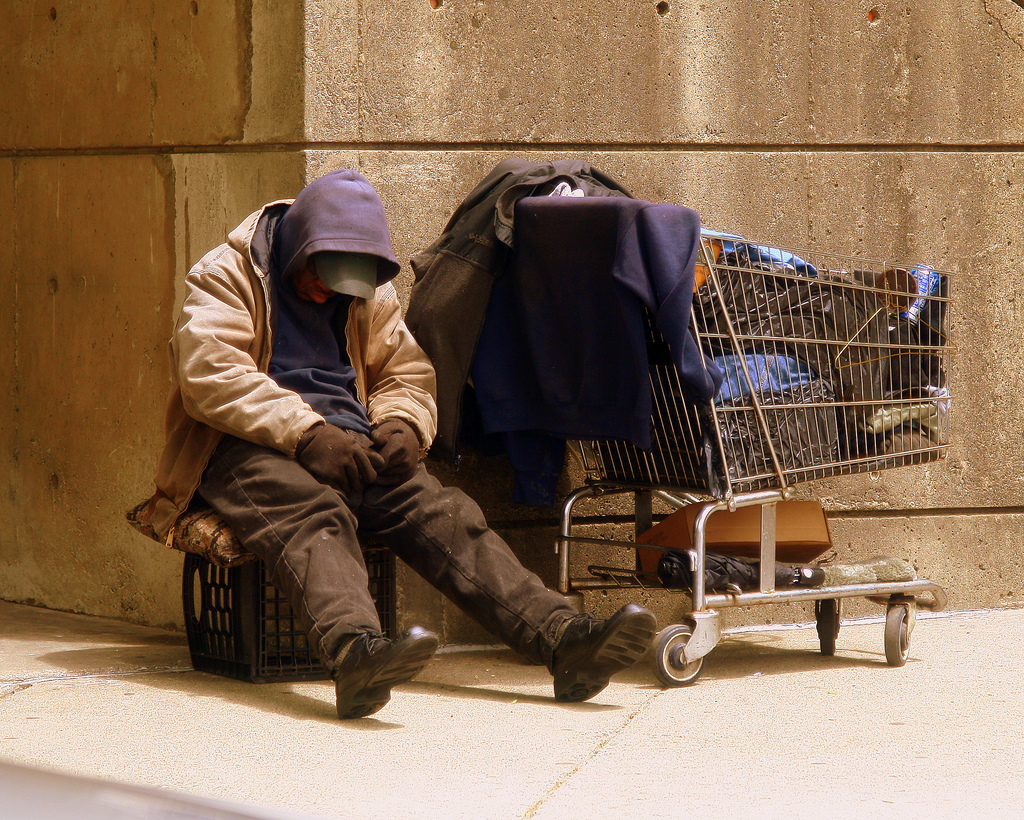
More than half a million people in the United States are experiencing homelessness. The rates of homelessness vary across states but California, which has one of the highest rate of homelessness, has seen a 6% increase in homelessness since 2020.
The statistics help us understand just how big of a problem homelessness is. But they also obscure the individual experience of being homelessness. Living on the streets is traumatic, and becoming increasingly dangerous – both because of societal conditions and upticks in community violence.
The recent killing of Jordan Neely refocused national attention on the individual experience of being homeless. Mr. Neely was 30 years old, had a history of mental illness and called the subway stations of New York City his home. The New York Times reported that Mr. Neely was on the City’s Top 50, a list of people known to authorities as facing significant life challenges and being unwilling to engage with homeless outreach workers.
Commenting on Mr. Neely’s death, Mayor Eric Adams said that he “did not deserve to die”. Many called Mr. Neely’s death a tragedy, citing the many failures of government systems for not ensuring Mr. Neely received the supports and services he so desperately needed. Some questioned the moral obligation of bystanders to intervene in what was clearly a life-or-death situation.
There was an outpouring of grief at Mr. Neely’s funeral. Yet hundreds of thousands of homeless remain on streets across America.
Addressing the Root Cause of Homelessness
Homelessness is caused by a variety of factors, including current economic, social, and political conditions. Many of these factors interact with each other making it difficult to disentangle cause and effect.
Eradicating homelessness, therefore, requires a multi-faceted solution. That solution can’t only respond to the current realities. It must also respond to drivers of homelessness including lack of affordable housing, poverty, mental illness and addiction, felony convictions, and discrimination.
Sadly, solutions to date have been piecemeal and fallen short. At both the federal and state levels, legislation has either failed to pass or not produced the desired outcomes. Sadly, the humanitarian crisis of homelessness remains.
Even though rates of homelessness show a downward trend, the problem persists. Most of the slowing happened during the pandemic due to COVID-related policies that provided homeless with emergency shelter in hotels and other transitional living options. As these policies come to an end, advocates and experts rightly warn surges in homelessness will continue.
Homelessness and the Right to Self-Determination
Most policies that seek to address homelessness emphasize the need to 1) increase funding support programs, 2) build emergency shelters and bridge housing, and 3) promote cooperation among local governments, nonprofits, and community organizations.
California’s Governor Newsom, who has historically supported homelessness reduction efforts, recently signed the Community Assistance, Recovery, and Empowerment (CARE) Court program bill – a highly controversial plan that will force homeless people into court-ordered mental health treatment.
The bill creates a civil court system was described by the Washington Post as a “middle road between jail and conservatorship”. Conservatorship is akin to appointing a legal guardian. Critics feel the bill goes too far in abridging homeless people’s autonomy and control over their own life. This loss of self-determination further exacerbates the loss of dignity the homeless often experience.
Another concern about conservatorship is that it can be difficult to terminate, even when the individual’s circumstances have improved. If it was difficult for Britney Spears, imagine what it’s like for someone who has less access to resources, supports and information to sever a guardian-like relationship.
Proponents of the bill argue that forcing the homeless into mental health treatment is better than the current system – which funnels the homeless into jails. The question of which comes first: homelessness or incarceration is a bit of a chicken and egg situation. Statistics show that people with conviction histories are more likely to experience homelessness. According to the Prison Policy Initiative, rates of homelessness among the formerly incarcerated, are highest for those recently released, people of color and women. This revolving door has been well-documented for over two decades, but effective solutions seem hard to come by.
Relationship building and trust have been proven essential elements of interventions with homeless individuals. California might consider how to complement the CARE program with other interventions like outreach programs, community engagement, employment and education programs. I believe the state would be best served by creating an integrated system of supports that make it possible to optimize the utilization of scarce resources.
A Path Forward
The impacts of the CARE program remain to be seen. Hopefully, government officials will closely monitor the implementation so that any unintended negative effects can be quickly identified and mitigated.
Whatever the outcome of the CARE program, I am doubtful that solution to America’s homelessness problem will emerge from a single piece of legislation. I believe that making progress on this issue will require that every American recognize homelessness as a condition that erodes human dignity and warrants our collective engagement. Individuals, communities, businesses, and government agencies must work together to 1) advocate for increased funding for affordable housing, 2) support the creation of broad-based coalitions that advance inclusive and equitable solutions, and 3) vote for leaders who prioritize homelessness.
To provide more housing options to increasing numbers of homeless, America needs more affordable housing options. A recently released report documents a shortage of over 7.3 million affordable rental homes for low-income individuals. The national housing shortage makes it even more difficult to provide the homeless with shelter.
America also needs economic and social policies that prevent more people from becoming homeless. Slow wage growth, coupled with the underlying housing shortage threatens the stability of the middle class.Americans who can’t make their rent or mortgage payments are at risk for becoming homeless under positive economic conditions. This risk is heightened in the current environment of high interest rates and softening business activity.
As a returning citizen, I am keenly aware that, probabilistically speaking, I should be homeless. That I am not, is a blessing.
This reality fills me with an enormous sense of responsibility to do something to assist those that are. I hope that this blog post helps to raise awareness about homeless issues and prompts readers to learn more about how they can get engaged in advocacy campaigns and volunteer programs that assist homeless individuals.
